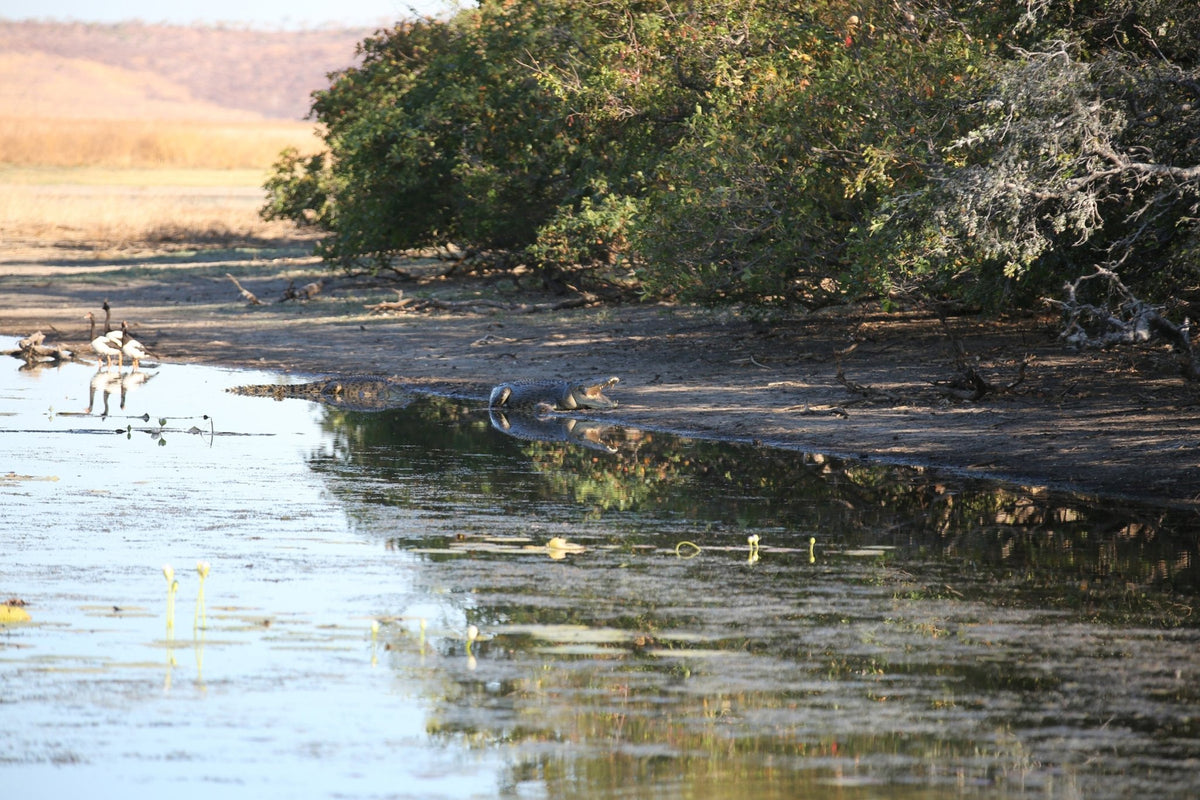
Noises in the Night
|
|
Time to read 3 min
|
|
Time to read 3 min
A few weeks back we were chatting with South African colleagues about their experiences of camping in the wild while sitting next to a fire with a potjie on. There are so many similarities between South Africa and Australia, it’s no wonder we share many common perspectives about what amounts to ‘the great outdoors’. While the land area of Australia is six times greater than South Africa, our climates have much in common, and our vast interior plateaus and ancient lands share many geological features. Not surprising really, as our land masses were once joined at the hip as part of Gondwana.
While we clearly shared many camping experiences, the ‘elephant in the room’ was equally obvious. Not only is South Africa home to some of the world’s largest herbivores, it also has its fair share of apex predators that will happily include humans in their diet. It’s at this point we were happy to admit that camping in Australia is a far less challenging prospect for us than for our overseas friends. With the exception of crocodiles and great white sharks, there’s really nothing that considers us to be a quick meal.
Sure, there are dangers out there. Most of us know that we’re at real risk if we tread on a venomous snake, get between a wild sow and her piglets, get stung by an Irukandji jellyfish, get too close to a wild male camel in mating season, stand on a nest of fire ants, or put our hand on a venomous spider. The list goes on.
Knowing there are no animals in the dark that are out to kill us, you’d think we’d all spend our nights around the campfire in blissful serenity. But it’s simply not the case. Australian wildlife really can let loose some spine-tingling noises — whether it’s the deep grunting of a koala staking its dominance; the growling, hissing and screeching of possums; the sound of a curlew screaming like a lost child; or the unearthly shrieks, coughs and growls of a Tasmanian Devil. Sometimes it can be hard to stay focussed on the campfire conversation.
Add into this the mating screech of a vixen or the long lonesome howl of a dingo as dawn breaks and it can all be a little unsettling, even for the most seasoned camper.
The truth is that these sorts of noises feed a whole host of deep-seated fears in the human psyche. While psychologists have a hard time working out the 'science of fear’, apparently it has a lot to do with chemicals in our brain that play a major role in our flight or fight responses. These include the neurotransmitter dopamine, which has been known to have connections with the sensation or expectation of reward and addictive behaviour, but more recently to anxiety, unconditioned fear and dread.
Because we generally associate screaming, screeching, and grunting with threats, when we hear them our primitive survival instincts are triggered, and our bodies go on high alert. Even though the fears may be irrational because no real danger exists, we can’t help it.
Fear of furry and feathered critters was a hallmark of early colonial experience here in Australia. For example, many of us know that the Tasmanian devil is so-called because of the scary noises it makes and its striking appearance. But colonial fear of Australian fauna went beyond individual species. In the mid-19th Century, a collective sense that our local fauna was deficient prompted the establishment of ‘Acclimatisation Societies’, first in Victoria and then elsewhere.
Introducing exotic game animals and birds to this country, their purpose was to make Europeans feel more comfortable in their new home, and we have been paying the price ever since. These efforts brought myriad invasive species to this country, and they continue to wreak havoc on native wildlife and fragile ecosystems today.
It’s worth remembering, too, that it’s not just Europeans who have an uncomfortable relationship with some of our native fauna.
Curlews, for example, feature in Aboriginal Dreamings, usually associated with parenting, grief, separation or death. The curlew’s wailing is said to be its remorse for the misdeeds which it committed in Dreamtime stories.
Similarly, the Tasmanian devil is traditionally regarded as a nasty animal that sought baby animals for its prey. The devil’s threatening appearance is said to be the work of Spirit Helpers who punished it for its offensive habits and who afflicted the animal with a noisy growl to warn other creatures away.
In Australia, it seems we humans have been getting creeped out by noises in the night well before the First Fleet sailed into view.
The reality is we live in a country where we have little to fear in the dark. The exceptions are normally brought about through human intervention, such as yobbos intent on imposing themselves on us, or wild dogs or dingos that we’ve allowed to get too close, too often.
Other than that, our fauna tends to be more frightened of us than we are of them.
So, take a deep breath next time you hear a growl in the night or see a set of orange eyes peering at you from beyond the light of the campfire. At least it won’t be a lion.